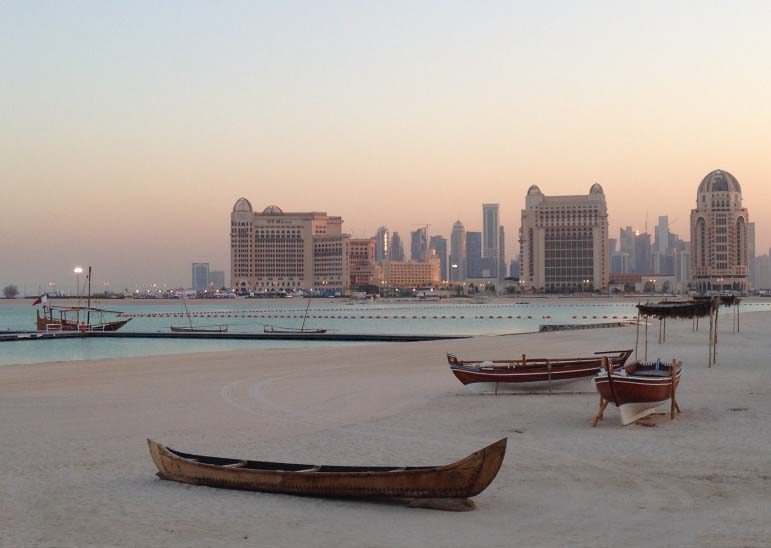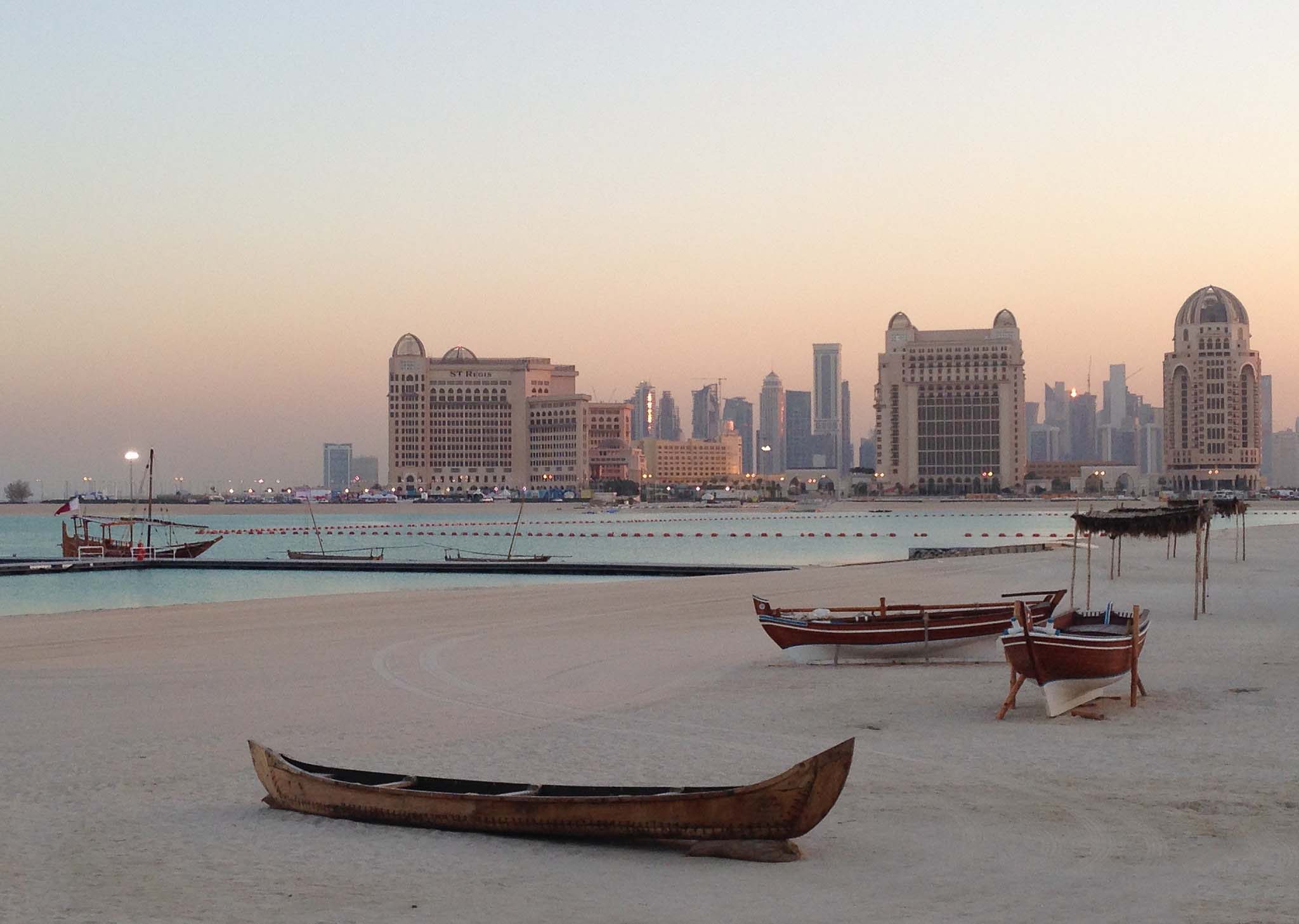
Qatar’s hoteliers could have trouble filling their rooms in the years before and directly after the 2022 World Cup, unless the country’s tourism sector picks up even more steam, a new report has concluded.
Though the number of visitors to Qatar is increasing rapidly, the number of hotels is growing even faster as hospitality businesses construct new accommodations to meet demand for the tournament, according to business advisory firm Deloitte.

Not everyone coming to Qatar for the World Cup will be staying in full-service hotels in Doha. Early plans call for many rooms to be located outside the capital city, and for some of the accommodations to be in “hotel apartments and serviced apartments.”
FIFA requires Qatar to have at least 60,000 rooms for visitors ready for the football tournament, although Qatar’s bid document included plans in 2010 for roughly 100,000.
In contrast, Deloitte estimated Doha would only be able to support 38,000 hotel rooms by 2022 outside the actual World Cup tournament. The firms’ most recent hotel market report continued:
“While investment into the hospitality and tourism sector in Qatar is growing and demand is steadily increasing, there is a risk that the demand growth will not be sufficient in order to sustain this level of supply growth post-2022 FIFA World Cup.”
When the party’s over
Qatar is not alone in that most countries that host mega-events are left with an oversupply of hotel rooms once athletes and spectators pack up. However, the last two World Cup tournaments were held in much larger countries that constructed far fewer new rooms than what’s planned here.

For example, hotel data firm STR Global said Brazil’s room supply grew by 1 percent annually in the lead-up to this year’s World Cup. Many of those newly constructed rooms are expected to once again be in high demand when Rio de Janeiro hosts the 2016 Olympics.
But South Africa, the host of the previous World Cup, faced more challenges following its hosting of the 2010 tournament. The global recession dampened tourism levels and pushed occupancy rates down to as low as 53 percent in the over-supplied market, according to a local media report.
However, tourist numbers kept rising after the tournament, and the country’s hotels are predicted to finish this year with a 62 percent occupancy rate.
Still, South Africa only constructed 10,300 new hotel rooms for the tournament, bringing its total to 58,000, according to consulting firm PwC. The new rooms are a fraction of what Qatar is planning.
Destination Doha
Qatar attracted a record 1.5 million visitors during the first half of this year (an uptick of 7 percent), due in part to a big push by the nation’s tourism authority. But the number of new hotel rooms has been increasing at an even faster rate, according to Deloitte.

The company said Doha’s supply of hotel rooms stood at nearly 13,600 at mid-year and has been growing by an average of 13.4 percent annually since 2008. Thousands of additional rooms, mostly in the upscale and luxury market, are in various stages of planning or construction.
But rather than being driven by market fundamentals – namely, high occupancy rates sustained over several years – hotel construction is part of the country’s preparations for the international football tournament.
This market “mismatch,” Deloitte said, has forced hoteliers to cut their rates in recent years to compete for customers. Average daily rates continue to edge downwards and revenue per available room – a common hospitality industry metric – in Doha is still down by nearly a third from its pre-financial crisis high in 2008.
While occupancy rates have recently been higher, averaging 72 percent year-to-date in August, the Qatar Tourism Authority said earlier this week that the improvement was due in part to a temporary supply reduction as several hotels – such as the Sheraton – undergo renovations.
By Deloitte’s calculations, demand for hotel rooms in Doha grew by an average of 11 percent annually for the past five years. If that trend continues and the city’s hotels stay at least 60-percent filled, Deloitte predicts Doha could support 38,000 hotel rooms by 2022.

How many rooms will be sitting empty after the tournament remains unclear, as is the exact number of hotel rooms expected to be in place for the World Cup.
FIFA’s bid evaluation showed that it expected approximately 100,000 rooms to be available by 2022, slightly more than a third of which would be in Doha.
While that may roughly align with Deloitte’s demand projections, there’s also the question of rooms located in cities and towns outside Doha that are far less popular with tourists than Qatar’s capital.

For example, FIFA expects there will be 40,000 rooms in Al Wakrah for the tournament. That includes some 6,000 rooms on cruise ships as well as 27,000 rooms FIFA said already existed in Al Wakrah at the time of its evaluation in 2010.
Officials at Qatar’s organizing committee, the Supreme Committee for Delivery and Legacy, said they are working to ensure the accommodations will be used after the tournament:
“The Supreme Committee for Delivery & Legacy is working closely with the Qatar Tourism Authority to ensure that the hospitality accommodation being developed is sustainable and contributes to the legacy of the 2022 FIFA World Cup,” the committee said in an emailed statement.
The Qatar Tourism Authority did not respond to a request for comment, but pledged earlier this year to spend billions of riyals in an effort to dramatically increase the number of tourists to the country.
The country is placing a particular emphasis on attracting more leisure visitors from outside the Gulf by marketing and developing more tourism-related products and services.
Thoughts?







